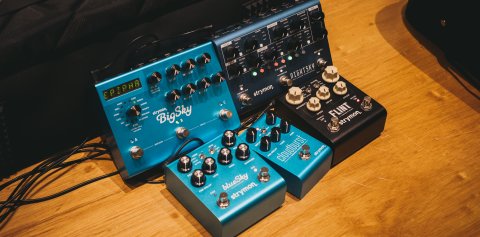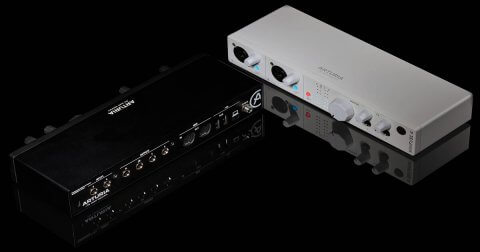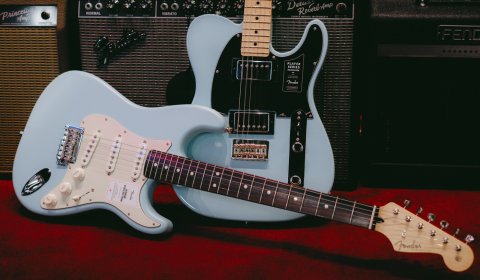Details matter! Especially if you’re talking about the subject of acoustic guitar body shapes.
A myriad of factors (woods, construction, strings, etc) can change an acoustic guitar tonally. You can even read the article we did on bracing types for an example of how even reinforcement struts below the top can materially change the sound of your acoustic guitar!
If you’re curious to know how acoustic body shapes affect your sound, join us as we take you through some of today’s most popular acoustic guitar body shapes!
Read more: Buyer’s Guide: The Best Acoustic Guitars for Beginners
Acoustic guitar body shapes – do they matter?
The body dimensions of acoustic instruments are a big factor in influencing their projection and tonal characteristics – hence why a violin doesn’t sound remotely anything like a cello. Typically, a smaller body will produce a more transparent voice with a higher frequency shimmer, while a bigger body will have a louder voice with more low-end response. Other factors like the depth of the body and the size of its waist play a part in how the acoustic guitar will sound too.
Travel/Small Body
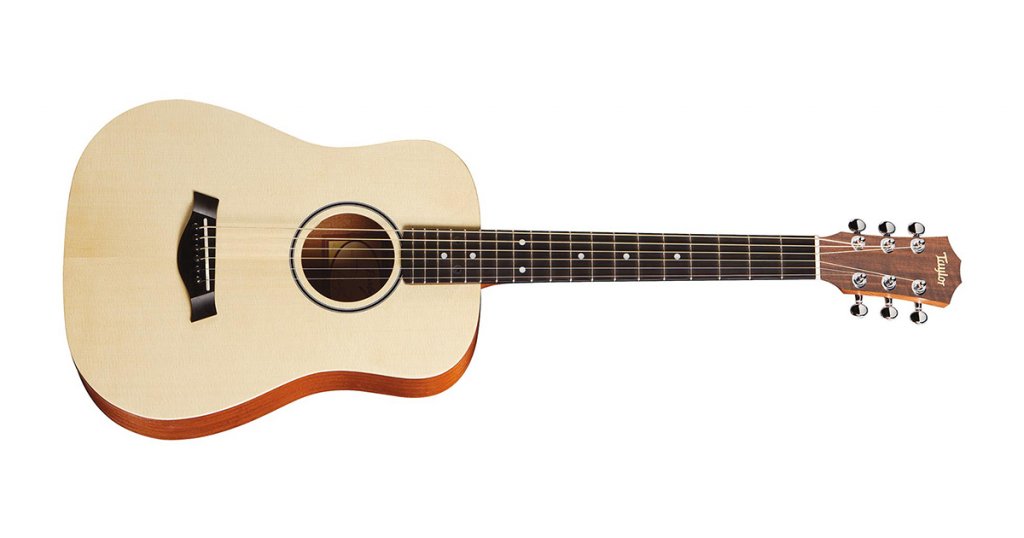
Let’s start with the smallest size and work our way up. Often termed as the Travel or Small Body, these guitars are often half or 3/4-sized to make them both portable and easier to play.
Due to their smaller size and scale length, these guitars are great options for beginners or children looking to get into the acoustic guitar. This is because smaller scale lengths entail slinkier string tension, shorter fret distances, and more comfortable ergonomics – features that make guitars of this shape more accessible to new players.
What it sounds like
Due to their smaller dimensions, these body shapes tend to be quieter and less bass-focused when compared to larger acoustic body shapes. However, these guitars are usually very responsive and have a sweet trebly voice.
Who might like it?
Beginners, children, and globetrotters are just some of the people who should consider these instruments. While these guitars are usually entry-level, there are some higher-end models that are regularly used for live performances and studio sessions.
Prominent users
Taylor Swift, Ed Sheeran
Parlor
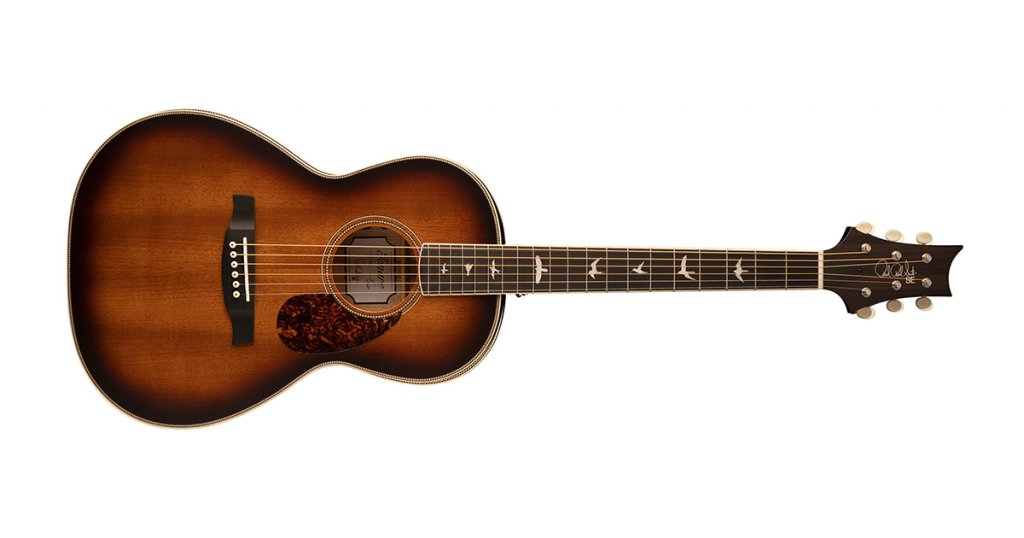
The Parlor guitar is the most petite shape you can get outside some “travel” and “baby” guitars. Make no mistake though, these guitars have a full-sized scale length (usually 24.9” to 25.2”), but are slimmer around the bout in comparison to other silhouettes. Parlors are usually 12-fret models (the neck of the guitar joins the body at the 12th fret) – so keep this in mind if you plan to play on the higher registers.
The steel-stringed Parlor saw the peak of its popularity during the first half of the 20th century – becoming the de-facto choice for blues and folk musicians of the era due to its distinct tone. Thanks to its size, ergonomic qualities, and sweet tones, this petite guitar has seen a resurgence in recent years amongst acoustic players.
What it sounds like
Clear, well-balanced and focused. There is a large emphasis on the mid-range and upper frequencies. However, there will be less attack in the bass end in comparison to larger body shapes.
Who might like it?
Blues and folk guitarists are the first names that come to mind. Finger-stylists, flatpickers, and slide guitarists have championed these instruments as well.
Prominent users
Bob Dylan, Blind Blake, Justin Holland, Robert Johnson
Concert
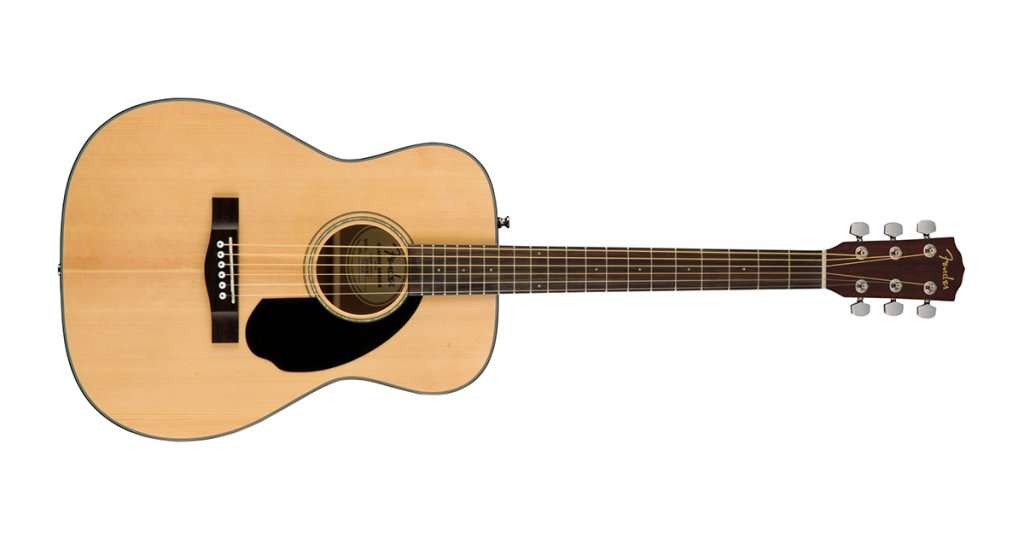
We’re going wider (and slightly thicker) with the next acoustic guitar body shape! The Concert (sometimes known as the OM) model sits nicely in between bigger-bodied acoustics like the Dreadnought, and smaller guitars like the Parlor. Due to its midway nature, this acoustic guitar body shape incorporates some of the best aspects of both silhouettes to offer massive tonal versatility.
Like the smaller Parlor, the Concert’s ergonomic qualities make it a joy to play. Its flat shoulders and narrow waist make the Concert a guitar shape you can pull in close for an intimate playing experience. Additionally, the Concert usually has a scale length of around 25.4″. This increases string tension, which helps in increasing its overall volume and projection.
What it sounds like
Prominent mid-focussed quality. An increase in volume well as a more pronounced low-range (in comparison to the Parlor) due to its larger depth. The boost in the bass balances out the treble-centric frequencies that are found in smaller-bodied guitars.
Who might like it?
Anyone looking for a solid all-rounder. This guitar is capable of taking over strumming, fingerstyle, flatpicking, and singer-accompaniment duty.
Prominent users
John Mayer, Eric Clapton, Johnny Cash, Paul Simon
Grand Auditorium
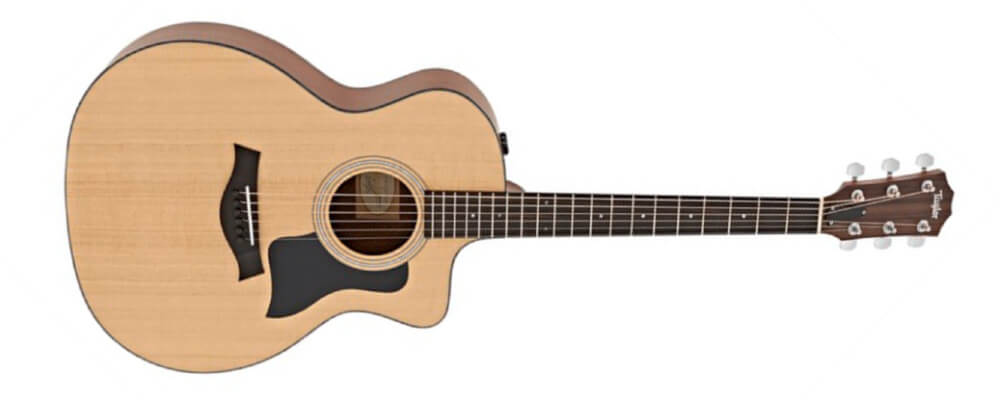
This next one is a relatively new design in comparison to the other long-standing shapes in this list. Designed by Bob Taylor of Taylor Guitars in 1994, the Grand Auditorium aimed to bridge the gap between the two categories sandwiching this body shape in this list.
More traditionally, the Concert shapes were pigeonholed as being fingerstyle guitars while Jumbos and Dreadnoughts are stereotyped as flatpicker and strummer guitars. But what if you want to play both styles despite only having room for one acoustic?
That’s where the Grand Auditorium comes in. First of all, the Grand Auditorium shape is able to accommodate the intensity of an overzealous strummer without flubbing out at the bass end. Conversely, this modern acoustic guitar shape also has tonal qualities and playability that’ll make fingerstyle players grin too.
The Grand Auditorium is wider than a standard Dreadnought across the lower bout of the body. It’s almost as deep but has a trimmer upper bout and waist. As a Taylor exclusive shape, the Grand Auditorium also comes standard with a 25.5″ scale length and their proprietary V-Class bracing system.
What it sounds like
Expect the beefy lows of a Dreadnought and the crispy highs of Concert shapes. The Grand Auditorium also has a pleasantly focused midrange and impressive tonal balance for clear, well-defined notes that suit both strumming and fingerstyle playing for players who are comfortable with higher string tension.
Who might like it?
Just like the Concert, the Grand Auditorium appeals to guitarists seeking out an all-rounder. However, this Taylor exclusive shape offers more bass presence. This body shape is also adored for its stage and studio prowess due to its sound profile and versatility. Whether you play pop, prog rock, or polka – you can’t go wrong with this shape.
Prominent users
Boyce Avenue, John Petrucci, Switchfoot
Dreadnought
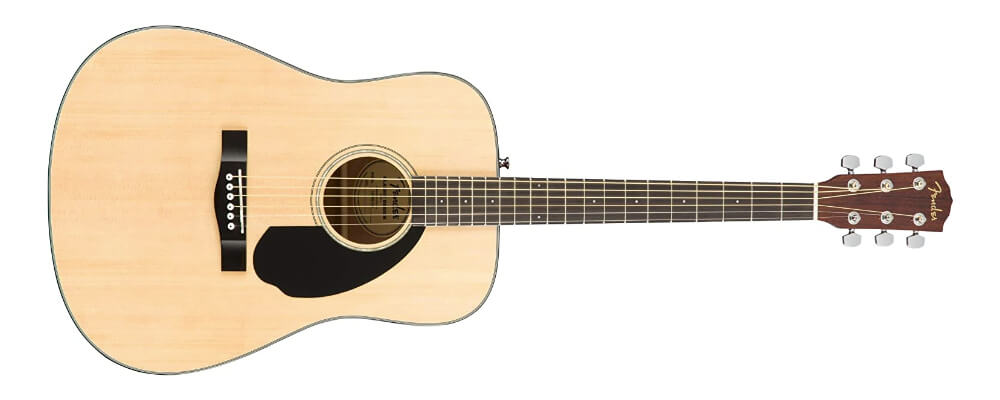
The Dreadnought is one of the most common guitar shapes you’ll encounter out in the wild. Its menacing name was inspired by the HMS Dreadnought, the largest Royal Navy vessel at the time.
Just like their namesake, Dreadnought guitars have deep bodies with wide uppers and lower bouts. Scale length is usually 25.5″ and above with a body depth of approximately 4.9”. The Dreadnought shape also comes with two different types of shoulders: round or square.
With such bountiful dimensions, it’s no surprise that its sound profile is just as large, with volume and projection being the first thing that most people notice. However, with great amplitude comes great heft. Dreadnoughts are big! So if you’re a smaller person or a child, playing this beast of an acoustic might be a compromise in comfort.
What it sounds like
The gold standard of steel-string acoustics, the Dreadnought is usually the starting point for tonal comparisons. Its sound has been in so many recordings that many people deem it to be the “right” sound – a pleasing timbre to most listeners. On top of being loud, this big body is described as having full and rich lower mids and bass frequencies.
Who might like it?
Dreadnoughts have a good balance of bottom end with high frequencies, allowing them to cover a lot of ground – rock, country, pop, folk, you name it! There are barely any genres that Dreadnoughts haven’t infiltrated. Strumming and flatpicking styles will find a home with the Dreadnought. However, its longer scale length and tighter string tension may prove to be a hindrance to fingerpickers.
Prominent users
Keith Richards, Thom Yorke, Kurt Cobain, Molly Tuttle
Jumbo
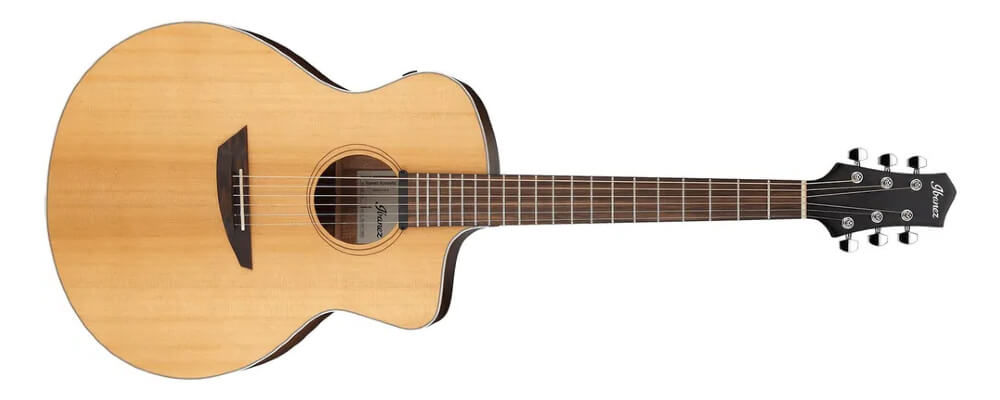
Here’s the big daddy of them all. If you thought the Dreadnought was huge, you’ve got another thing coming.
Bold and brash, the Jumbo is not for the weak-hearted. This opulent shape has the largest dimensions in all critical areas (depth, width, and length). Even the smallest Jumbos have a 17″ body width (with slim waists) and depths of close to 5″ – all significantly more than a Dreadnought. With all these curves, the Jumbo is ideal for players who perform sitting down or are able to cope with its size while standing.
This guitar shape has traditionally been used for meaty chord work as it has excellent projection. In fact, when playing, you can literally feel the air move inside the body of the Jumbo. Admittedly, the advent of acoustic amplification and the lack of ergonomics on the Jumbo has seen it lose popularity in recent years. However, this iconic shape still has a cult following due to its unique applications by iconic musicians.
What it sounds like
Due to its gargantuan dimensions, the Jumbo will provide excellent projection, volume, and resonance thanks to the amount of room in the body. Its depth and wide soundboard give it loads of low-end clarity with a percussive oomph.
Who might like it?
Need something bigger than the Dreadnought, both literally and figuratively? You’ll find it with the Jumbo! Although it’s not quite as tonally balanced as the Dreadnought shape, the Jumbo still has a tone that can play most genres. However, you’ll most commonly find them slung across a country or folk player. One major thing that’s most apparent on Jumbos (and some Dreadnoughts) is that you’ll have to really work that right hand to make it sing. It’ll be hard work but you’ll be rewarded with a voice like no other. Strummers and flatpickers, rejoice!
Prominent users
Noel Gallagher, Pete Townsend, Everly Brothers, The Edge
And that’s that for acoustic guitar body shapes! You’ve probably realised by now that sound, style, and comfort play a huge part in determining the build that you should go for. Keep in mind though that your playing may evolve over time, so you might not find yourself sticking to just one body shape as you progress. Variety is the spice of life, after all!
If you’d like to shop our full range of acoustics, head over to our online store, or come in for a one-on-one session to discuss more things guitars. For latest store arrivals and updates, subscribe to our newsletter)! If you’re looking for any specific guitar-related advice, drop us a message and we’d be happy to help you out!
Read more: Guitarology 101: Acoustic Guitar – Laminates & Solid Wood

